The brutal secret of school sport initiations
- Published
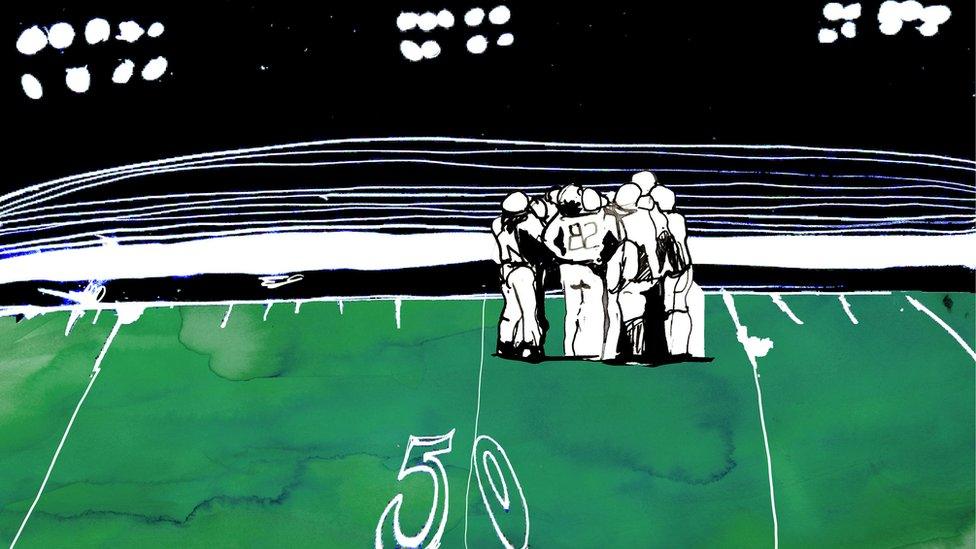
Hazing rituals have long been a brutal secret among high school and college sport teams. But in the #MeToo era, can teenage victims shatter the code of silence?
*This story includes some graphic descriptions of sexual assault*
When Allison Brookman arrived at Reed Custer High School to pick up her 14-year-old son Anthony from American football camp, she knew something was wrong.
"You can kind of tell when your kid is hurt or sad," she told the BBC.
"When I pulled up, I saw that same look in his face, that he was hurt."
After some needling from his mother, he admitted he had just been "jumped" by four senior football players.
But it wasn't until she took him to hospital to have his injuries examined that she heard what had really happened - that Anthony had been beaten up and sexually assaulted by members of the team as part of a violent hazing ritual.
"The first guy who slapped me twice and knocked me down, he kicked me in my right side on my ribs," Anthony told CBS in an interview., external
"While the fourth one took my shorts off and they pulled my legs up so that he could get his finger to my, you know, body part."
Allison says when they heard this in the hospital examining room, she and her husband were stricken with horror.
"They didn't just beat you up, they tried fondling you?" she recalls asking.
"At that point my son looked at us and said 'don't worry mom, don't worry dad, they didn't get in me.'"
"That was probably the breaking point for both of us."

Anthony Brookman was 14 when he says he was attacked and sexually assaulted by teammates as part of a hazing ritual.
Now the family is suing the Reed-Custer Community Unit School District 255 in Braidwood, Illinois, claiming it failed to prevent the sexual assault and for allegedly not properly responding to the incident once they became aware.
Superintendent Mark Mitchell defends the schools actions and says the players were punished "according to the terms of the School District's Athletic Code of Conduct." The school is defending the legal action.
Three of the alleged attackers have also been charged as juveniles with aggravated battery. They are not named as they were minors at the time of the incident.
As their case winds through the courts, other eerily-similar incidents have also come to light. In Maryland, four 15-year-old members of the Damascus High School junior varsity football team are accused of raping a younger teammate with a broomstick as part of a hazing ritual, and trying to rape others.
Prosecutors have told in chilling detail, external how the alleged attackers cornered four freshmen teammates in the locker room.
"It's time," one of them said before they ganged up on the first victim, holding him down and sodomising him with the broom handle.
They are being tried as adults. A fifth suspect is being charged as a juvenile.
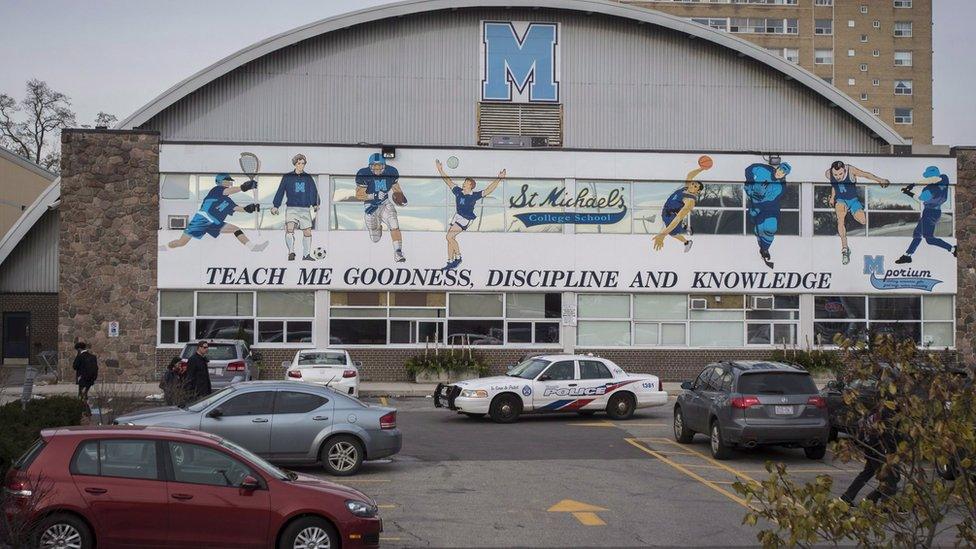
Seven students from St Michael's College School were recently arrested and charged in connection with an alleged assault
And in the Canadian city of Toronto, seven 14- and 15-year-old football players from St Michael's College School are facing charges of gang sex assault related to three separate hazing incidents.
In one incident, a video allegedly showing a teammate being penetrated by a broom was shared online.
These high-profile cases of sexual assault have reignited the call to end hazing in sports. And in the #MeToo era, many former victims are coming out to share their story.
What is hazing?
Hazing is when members of a group deliberately embarrass or harm new or prospective members as part of a rite of passage, or initiation into the group.
"These are powerful forces that we're talking about, wanting to belong and wanting to be a part of a community," says Jay Johnson, an expert on hazing on sports teams who teaches at the University of Manitoba.
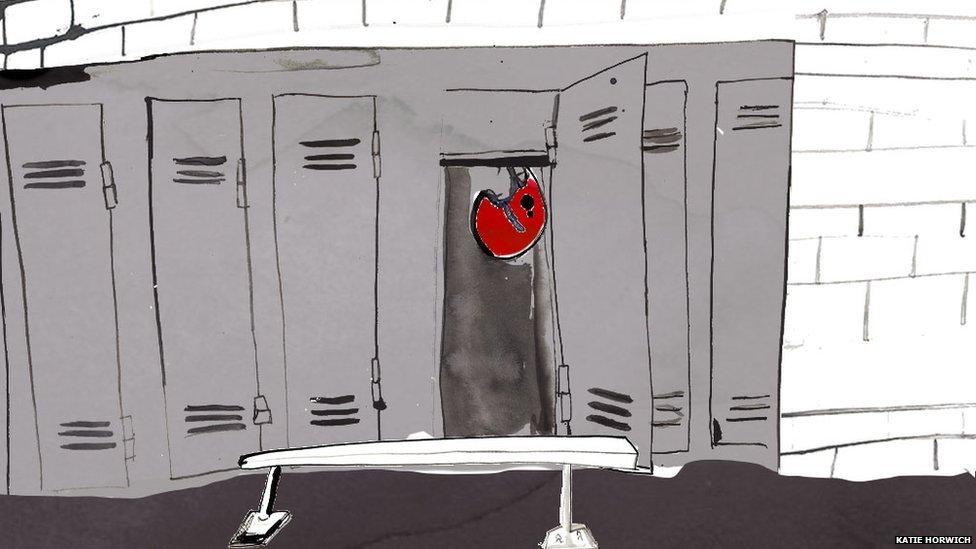
Hazing rituals can run the gamut from relatively benign - forcing team members to carry the gear to matches, or chant silly songs on campus - to extreme forms of bullying, including physical and sexual abuse.
It has been most commonly associated with university fraternities and sororities and athletic clubs, but high school groups are not immune. A 2000 survey by Alfred University, external found that about half of high school students reported participating in activities that qualified as hazing - while only 14% identified as being hazed.
In the US, 44 states have banned hazing.
In Canada, many universities and sport organisations have anti-hazing policies, though no federal law specifically targets the practice. Like in the St Michael's incident, police have often relied on assault laws when laying charges in hazing cases.
In the UK, the Rugby Football Union, the sport's governing body, has said initiations at university clubs are putting people off wanting to continue playing.
It claimed the traditions are partly to blame for an estimated 10,000 school leavers who recently stopped playing.
When hazing turns criminal
Most students who have been hazed have trouble realising they were, says Johnson, in part because a lot of the activities may seem harmless and like they were "just being a part of a team".
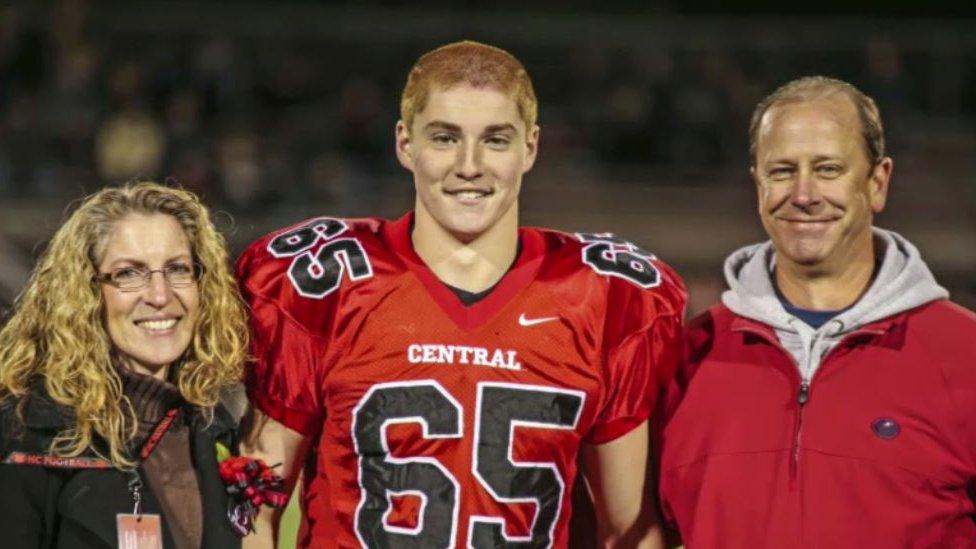
Fraternity members waited 12 hours before calling police to help Timothy Piazza (centre)
But hazing can turn sinister, and the practice leads to several deaths a year, often from alcohol intoxication.
Sexualised hazing is also fairly common, says Johnson.
From Texas to Australia, there have been reports of ritual sex assault on school sports teams for years.
A 2017 investigation by the Associated Press found 70 cases of teammate-on-teammate sexual assaults in US public schools between 2012-2017, which it called "the tip of the iceberg".
The cases are shocking both in their violence and their similarity, often featuring some variation of older teammates sodomising victims with anything from a fist, to a Gatorade bottle to the nozzle of a carbon-dioxide tank.
Earlier this year, an organisation called End Rape on Campus released a report saying that orientation week at Australian Universities is called "The Red Zone", external by sexual assault support workers due to the combination of assaults, hazing rituals, and excessive alcohol consumption.
Code of silence
Sometimes all it takes is one bad apple to push a team to commit sexual assault, Johnson says.
"All it takes is that one person in power, or at the top of the hierarchy... a veteran player who came in who was a bit on the sadistic side, who pushes that boundary of what it can become," he says.
But hazing rituals usually stem from a toxic team culture, he says.
Traditions are passed down from year-to-year, and today's aggressors were often last year's victims. Often, coaches and other authorities turn a blind eye, Johnson says.
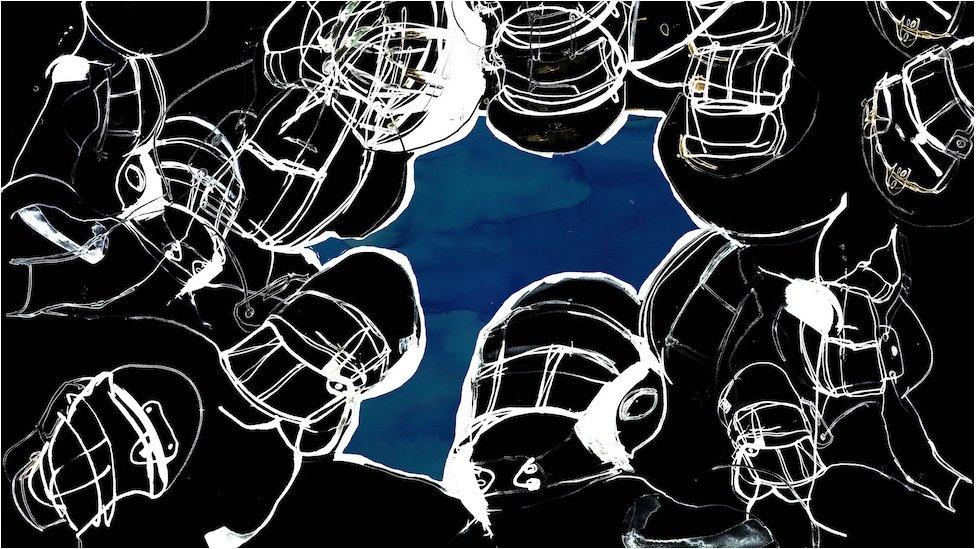
In their lawsuit, the Brookmans blame the school for allowing the hazing to fester on the team until it escalated to their son's assault. They also blame the school for allegedly not protecting their son from bullying after the incident.
Allison says Anthony was harassed every day by fellow students who called him a "rat". Meanwhile, she says, the alleged attackers only received a three-day game suspension.
It was the lack of action, she says, that led the family to sue.
"We just wanted to do our best to let our son see that he was somebody who was worth fighting for," she says.
Anthony now goes to a different school, and is seeing a therapist. The head coach resigned from the team, although he is still a teacher at the school.
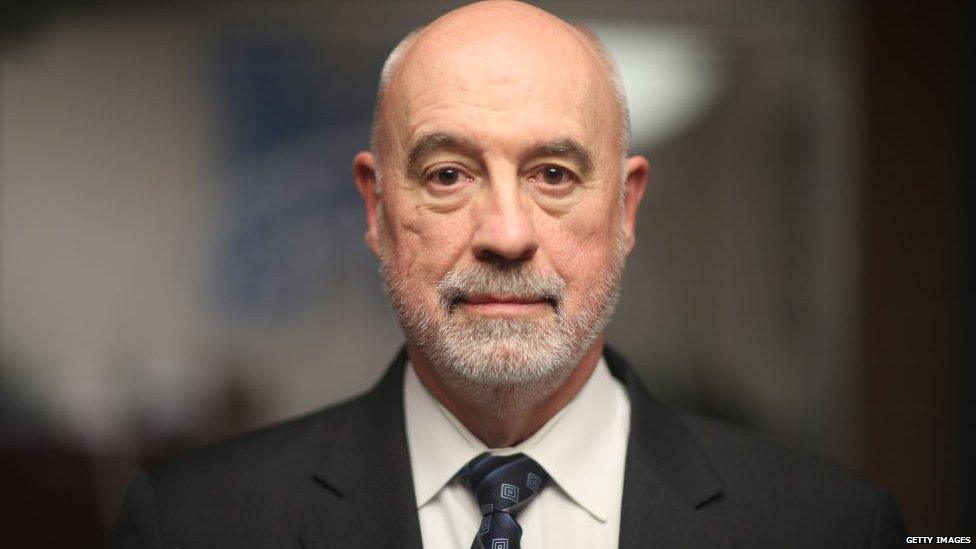
Greg Reeves is the former principal at St Michael's College School. He resigned on 22 November
Superintendant Mitchell says the student-athletes were disciplined according to school guidelines. He says he is not legally allowed to comment on individual disciplinary cases.
"We intend to vigorously defend these baseless allegations and protect the reputation of our fine School District and its staff," he said in a written statement.
In Toronto, the hazing allegations led to the resignation of school principal Greg Reeves and school president Father Jefferson Thompson.
Several alumni critiqued what they claim was the elite school's culture of "toxic masculinity" and claimed it had a "code of silence", especially once it was revealed that Principal Reeves did not immediately report the video of the alleged sexual assault.
He said that he did so the next day, after first helping the victim to tell his parents, because caring for the victim had been his first priority.
"This is a great school, and the majority of the teachers are great people. Where was the oversight? Like, what's going on with your teams? What is the mentality here? … There's a code of silence at the school," a parent told Postmedia news outlet. , external
#MeToo in the locker room
The Brookman's story, and the sexual assault cases in Maryland and Toronto, have come to light during an era of public reckoning about sexual violence.
From Hollywood to the Supreme Court, victims have come forward to describe how powerful institutions silenced them to protect their attackers.
Are youth sports next?
Johnson says he believes the attention that is being paid to Anthony's case, and the sexual assault charges laid in Maryland and in Toronto, show that people are beginning to think differently about hazing.
"I actually have hope that this might sort of be the flashpoint, for opening up the floodgates, similar to what happened to the #MeToo movement," Johnson says.
"That more people might start to come forward and feel empowered to share their stories."
There are signs that is starting to happen. In Toronto, prominent NHL players have revealed they were victims of sexual hazing while playing in junior ice hockey leagues, as have some alumni of St Michael's.
Allow X content?
This article contains content provided by X. We ask for your permission before anything is loaded, as they may be using cookies and other technologies. You may want to read X’s cookie policy, external and privacy policy, external before accepting. To view this content choose ‘accept and continue’.
Ultimately, that is why Anthony agreed to tell his story on the nightly news.
"You see a lot of hazing on TV, but that's all it is, it's the news reporter maybe talking with the other news reporter and a picture of the school," Allison recalls her son telling her.
"Nobody ever steps forward, I want people to actually see my face and see what people did to me."
- Published17 November 2017

- Published16 November 2017
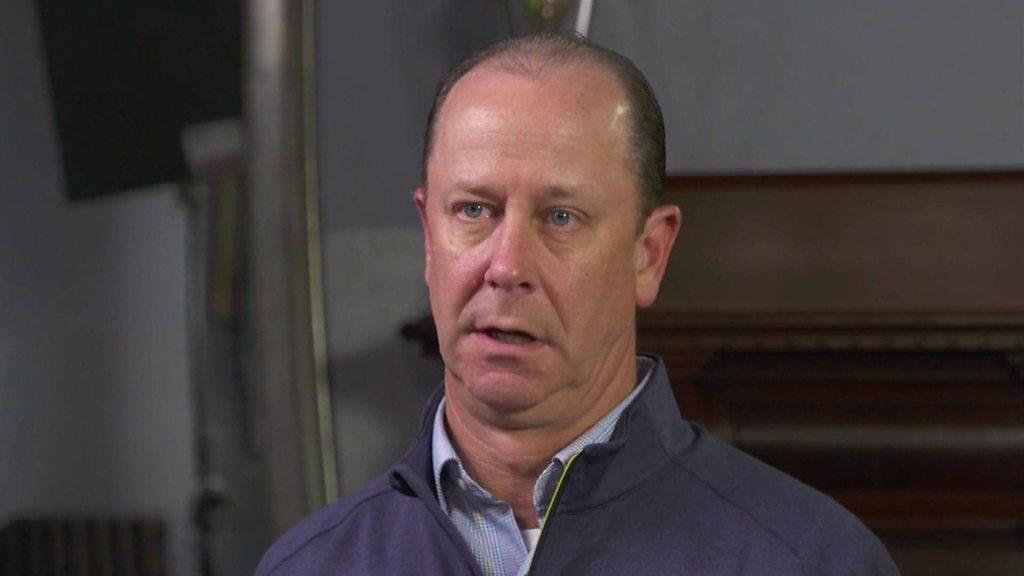
- Published5 September 2018
